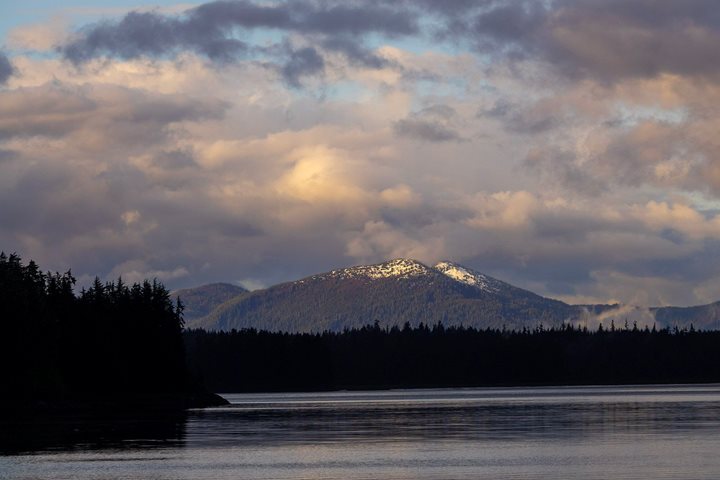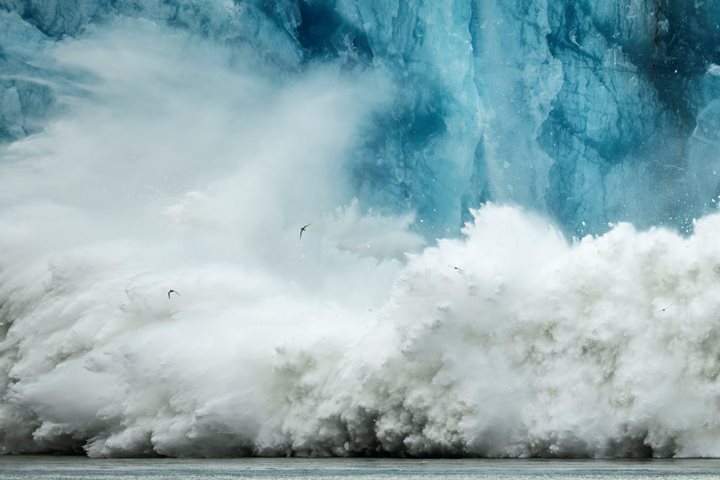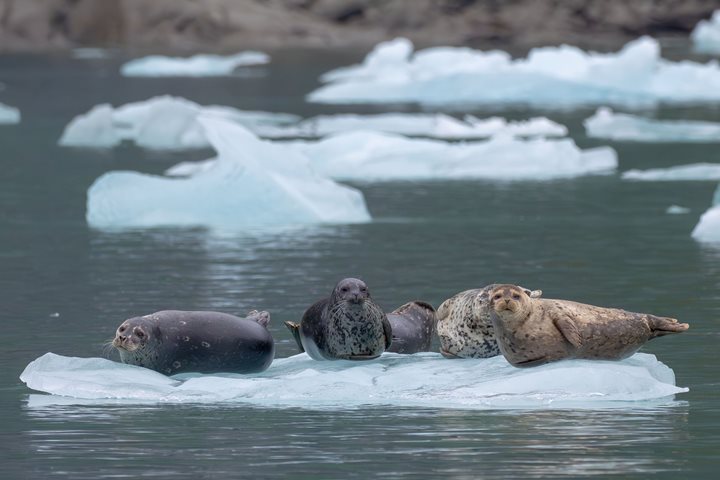Our final day aboard National Geographic Sea Bird began with explorations of Sand Bay, right outside the mouth of the Tracy Arm-Fords Terror Wilderness Area. While some of us went on hikes in the area, others enjoyed a Zodiac cruise, finding a variety of birds, the common loon and surf scoters among them. We returned to the ship and made our way down the more than 30 miles to the face of South Sawyer Glacier. We lucked out with incredibly clear sunny skies and hopped into Zodiacs to bask in the beauty of the glacier and ice. There couldn’t have been a better place to finish our trip.
- Daily Expedition Reports
- 19 Jun 2024
Sand Bay, Tracy Arm, and South Sawyer Glacier, 6/19/2024, National Geographic Sea Bird
- Aboard the National Geographic Sea Bird
- Alaska
Shannon Malone, Naturalist
Growing up along the coastal environment of San Diego, Shannon started her first volunteer job at a local nature center at the age of six. Since then, she has built her personal life and professional career around connecting with nature. She received...
Read MoreShare Report
Alaska Escape: LeConte Bay, Wrangell and Misty Fjords
VIEW ITINERARYRelated Reports
5/29/2025
Read
National Geographic Sea Bird
Endicott Arm
Dawes Glacier, located at the head of Endicott Arm in Southeast Alaska, is an active tidewater glacier in the remote Tracy Arm-Fords Terror Wilderness Area. Reaching the glacier requires a 30-mile journey through a narrow fjord lined with sheer rock walls rising over 3,000 feet. These cliffs are veined with waterfalls and often blanketed in mist. Throughout the fjord, remnants of the glacier float in the form of icebergs. The glacier feeds cold, silty meltwater into the fjord, giving the water a distinctive milky-green hue and supporting a rich marine food web. Harbor seals were hauled out on ice floes near the glacier. Gulls and Arctic terns were actively feeding, likely drawn by the small fish and plankton concentrated by the glacial outflow. The glacier calved several times, hurling large chunks of ice across the water’s surface, sending the birds fleeing. The sound of the ice hitting the water echoed off the steep rock walls that rise thousands of feet on either side.
5/27/2025
Read
National Geographic Sea Bird
Dawes Glacier in Endicott Arm
We could not have asked for a better way to end the expedition. Our last day was amazing! Visiting Dawes Glacier in Endicott Arm was a highlight with its crystal-blue ice and resting harbor seals floating by on the ice. In the evening, we even got to see a couple of humpback whales off the bow of the ship. We ended the day by watching images of the beautiful moments created on our expedition during the famed guest photo slideshow.







